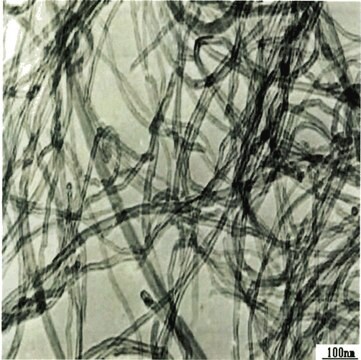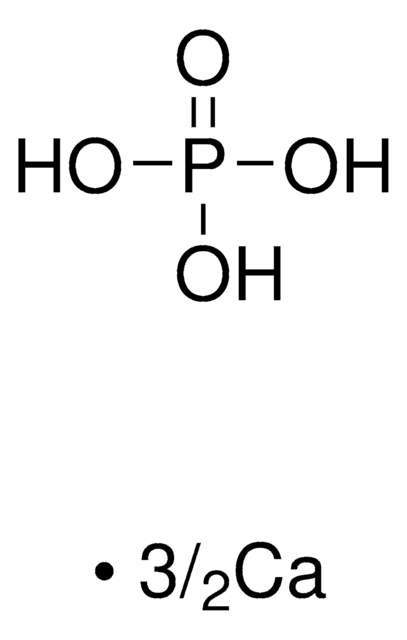702153
Hydroxyapatite
nanoparticles, dispersion, 10 wt. % in H2O, <200 nm particle size (BET)
동의어(들):
Calcium hydroxide phosphate, Calcium hydroxylapatite, Calcium hydroxyphosphate, Nano hydroxyapatatite, Pentacalcium hydroxide triphosphate
About This Item
추천 제품
형태
dispersion
nanoparticles
Quality Level
포함
≤0.025 wt. % dispersant (non-metal based)
농도
10 wt. % in H2O
표면적
14.3 m2/g , typical
입자 크기
<200 nm (BET)
pH
4-6
density
1.038 g/mL at 25 °C
SMILES string
[Ca++].[Ca++].[Ca++].[Ca++].O[Ca+].[O-]P([O-])([O-])=O.[O-]P([O-])([O-])=O.[O-]P([O-])([O-])=O
InChI
1S/5Ca.3H3O4P.H2O/c;;;;;3*1-5(2,3)4;/h;;;;;3*(H3,1,2,3,4);1H2/q5*+2;;;;/p-10
InChI key
XYJRXVWERLGGKC-UHFFFAOYSA-D
유사한 제품을 찾으십니까? 방문 제품 비교 안내
일반 설명
애플리케이션
- An implant material for bone substitute due to its chemical similarity to the inorganic component of bone and osteo inductive properties.
- A vehicle for gene and drug delivery because of its encapsulation capacity and affinity to several drugs and proteins.
- A pH responsive particulate emulsifier.
특징 및 장점
- Biocompatible
- Osteoconductive
- Stable under physiological conditions
- High mechanical strength
법적 정보
Storage Class Code
12 - Non Combustible Liquids
WGK
WGK 1
Flash Point (°F)
Not applicable
Flash Point (°C)
Not applicable
이미 열람한 고객
문서
Nanoparticles can be used for applications such as growing cells for tissue engineering, nanocomposites used in orthopedics, and miniaturized sensors for DNA, pathogens, and chemicals.
A key challenge for nanomaterial safety assessment is the ability to handle the large number of newly engineered nanomaterials (ENMs), including developing cost-effective methods that can be used for hazard screening.
자사의 과학자팀은 생명 과학, 재료 과학, 화학 합성, 크로마토그래피, 분석 및 기타 많은 영역을 포함한 모든 과학 분야에 경험이 있습니다..
고객지원팀으로 연락바랍니다.









